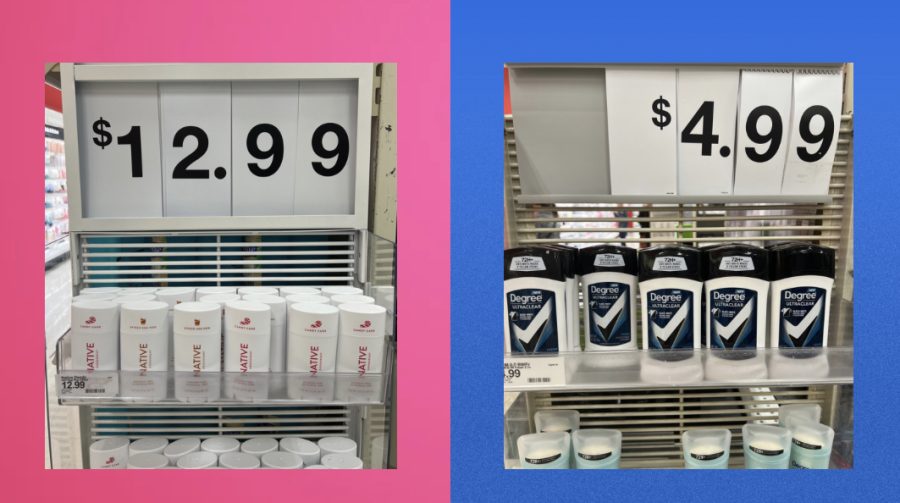Opinion: Price and Prejudice
The elimination of gender-based price discrimination is an important step towards equality.
While the cost of women’s deodorant rises to hefty prices, men’s deodorant remains affordable
March 8, 2023
As seen in the picture above, the contrast in price is steep between the two products, but how are they any different? The products in both images are exactly the same except for the price and, of course, the marketing. Each shows an array of deodorants, but on the left, they are marketed toward women, and on the right toward men.
For example, the brand on the left, Native, offers a variety of scents ranging from floral fragrances to ones with sweeter, fruity notes that are designed to appeal to women. The ones marketed toward men have a pungent, musky scent, which is viewed as traditionally masculine. Although stereotypical gender associations have lessened in significance, they remain present in marketing strategies. Even the packaging is deliberately developed to entice its intended demographic of consumers.
Hopefully, with the provided context, this image now elicits full-fledged outrage.
While not all feminine products experience a price hike purely based on marketing, many do, ranging from hygienic products such as deodorant and shaving cream to services such as haircuts. In an article by Forbes, there were even reported disparities in the costs of dry cleaning between men and women.
There are two major ways that price prejudice occurs. The first is portrayed in the previous example, with the sale of virtually the same products at vastly different prices depending on the target demographic. This is the phenomenon known as the “Pink Tax.” Secondly, bias emerges in the form of an actual tax on essential feminine products.
Depending on the source, the Pink Tax could refer to both the price hikes on products marketed to women and the tax on menstrual products. This understandably causes confusion; however, these notions are distinctly separate. Although the latter is an actual tax, it is the former which refers to the Pink Tax in its original, intended usage. Even more dizzying is that the tax on feminine products has been coined the “Tampon Tax” in order to differentiate the two.
The sales tax on period products, a basic necessity for all women, is an unmistakable display of gender inequity. It is implemented in 22 states. In some other states, the tax transpires undetected at the local level, in counties and cities.
It is estimated that in a single cycle, women use approximately 20 menstrual products or more, and over a lifetime of cycles the sum of expenditures on these products tallies quickly. The relevance of this issue is heightened by the demand for these vital products, which are made inaccessible to those in need by this prohibitive expense.
The presence of gender-based price discrimination illustrates that there are still battles to fight. Feminist or not, these injustices require an evolution in current legislation and a greater level of attention in politics. The question that naturally arises is how can one work to amplify the conversation of gender equity in order to facilitate changes in society. The first step is raising awareness by any feasible means, firmly planting this pertinent matter on the map.












